0Basket0Item: £0.00
Save £50 on retail prices by being a member
Become a member now or enter your membership number in the basket. More about Membership.
Enjoy your members only prices!
Total items:0
Maybe you've booked your first family ski trip for easter half term, or perhaps friends have rented a ski chalet and you're considering taking up the invitation. Whatever your reasons, congratulations, winter sports are an awesome way to enjoy some of the World's most breath-taking places!
No matter if you intend to spend long days or poaching perfect powder runs, or brief jaunts down the nursery slopes interspersed with hot chocolate breaks, wearing the right kit will increase your enjoyment ten-fold. In the mountains, the weather can switch from sunbathing paradise to baron blizzard very quickly, so it is vital that you go equipped with the right clobber.
Here's our list of essential clothing and accessories to pack for your ski trip. Hopefully, after reading this article you will be able to make informed decisions about the ski gear you invest into. If you need more help, pop into a GO store, where our knowledgeable team can answer your questions.
Click the links to read more about each of the items in the packing list.
Ski Socks – specialist socks that are designed to keep feet warm and comfortable in ski boots.
Ski Gloves – warm and waterproof gloves that are tough enough to handle ski edges.
Ski Helmet – a good fitting helmet with protection that meets EU standards.
Ski Outerwear – weather protective clothing that keeps you warm, dry and organised in the mountains.


Not all mountains are the same, so, it's important to understand how where and when you plan to ski should influence your clothing choices.
December, January and February are the coldest ski months in the northern hemisphere. By March, winter's grip is starting to loosen. In general, April is usually comparatively mild. Bear this in mind when packing for your trip – a full blown down parka in April can be just as uncomfortable as skiing in January wearing a poorly insulated shell jacket.
Throwing another variable into the mix, as well as the time of year, it's worth considering the location of your ski trip. If you are visiting a high-altitude resort such as Val Thorens in France, Laax in Switzerland, or Kaprun in Austria, pack for colder, windier conditions. The European Alps are comparatively tame in their extremes - other ski regions can present much more challenging conditions.
Pack extra warm layers if you are skiing the Canadian state of Alberta – the east side of the Canadian Rockies can be brutally cold mid-winter. In the neighbouring state of British Columbia, home to resorts such as Whistler, where the weather is more influenced by the Pacific Ocean, there is more precipitation, and the snowpack contains a high moisture content. More moisture will cause outerwear to wet out very quickly, so the waterproof (hydrostatic head) rating is an important consideration. Less so on the Japanese island of Hokkaido, where the snow is cold and dry. If you're combing a trip to visit Santa Claus in the Arctic Circle with some skiing, you will need goggles with low-light lenses for skiing under artificial light – there are only a couple of hours of daylight.
In summary, do your research and select your gear appropriately.
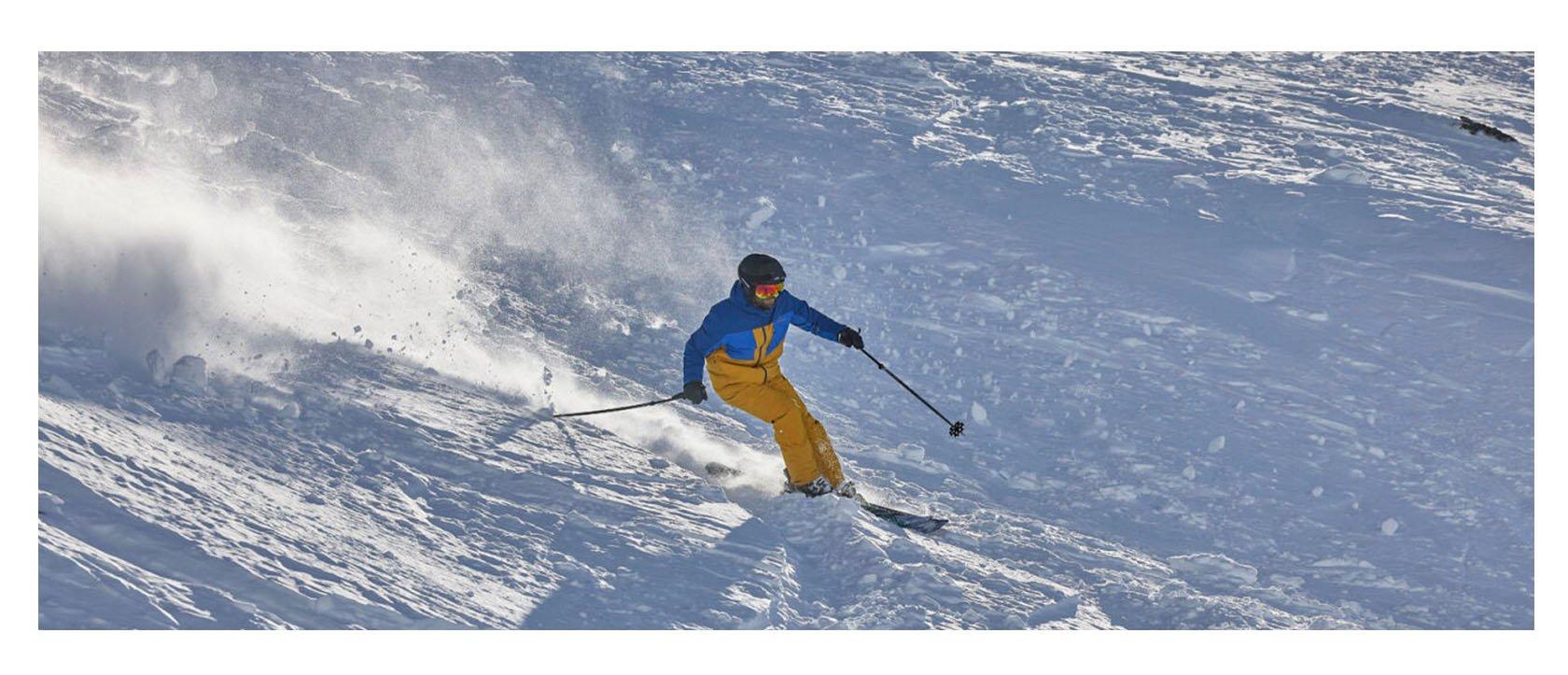

This is a question that's asked all the time. To which the answer is "yes you can". But (there's always "but"), everyday outdoor apparel isn't ideal for skiing and snowboard because of the following reasons:
No. Technical base layer and mid layer clothing, no matter if it is made by a specialist ski brand or a more general outdoor clothing manufacturer, is designed for the same purpose and is interchangeable.
Our ski packing list is as relevant for children as it is for adults. There are a few additional considerations in terms of features and fit, but for the most part, pack the same things and size them down.
Check out our short and informative guide to dressing your kids for skiing!
Always wash ski outerwear with a technical wash before storing it away for the summer. A technical wash from Grangers or Nikwax will remove grime and doesn't clog-up waterproof membrane pores. Any DWR coating which has been degraded can be topped-up with a reproofing spray after washing while the garment is still wet or washed-in with a 2-in-1 wash and reproofing product. Drying the clothing in a warm tumble-dryer ensures the new DWR finish performs to its best.
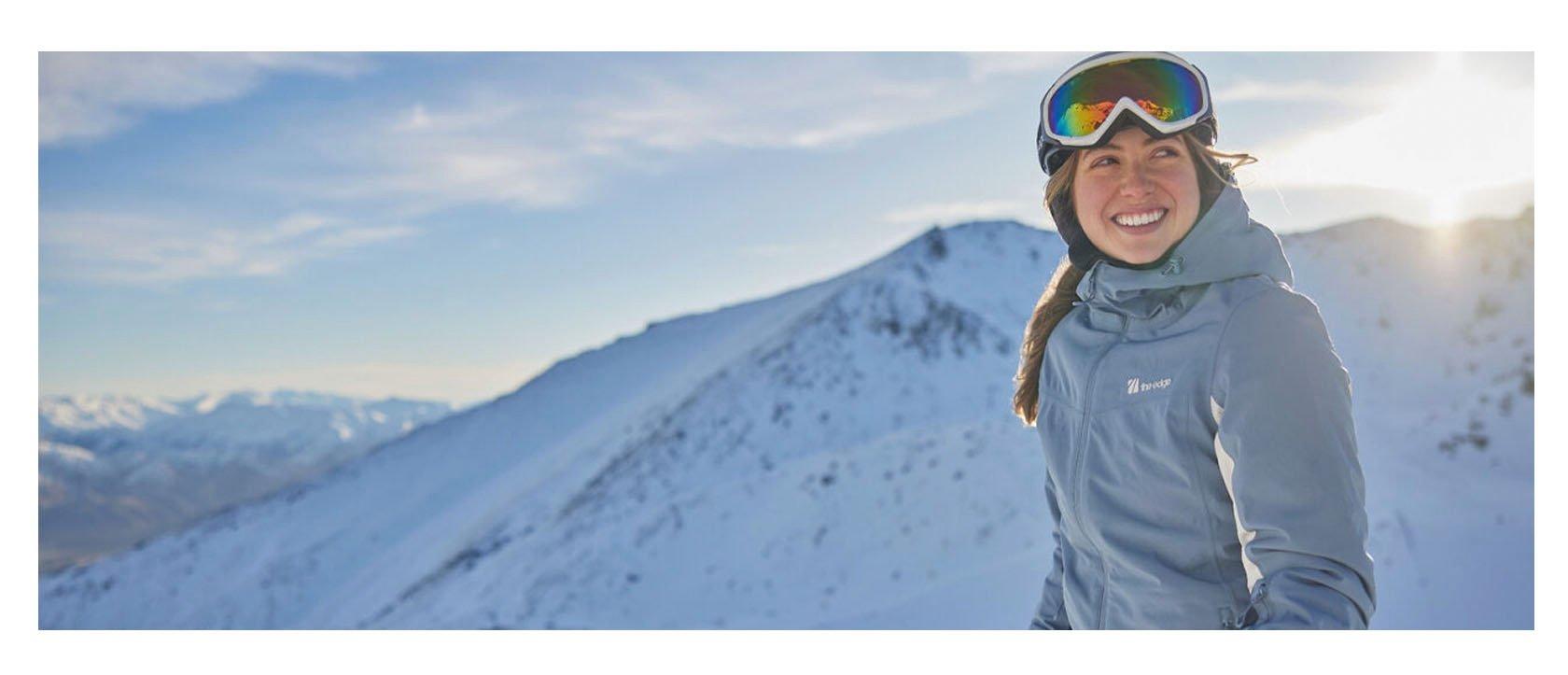

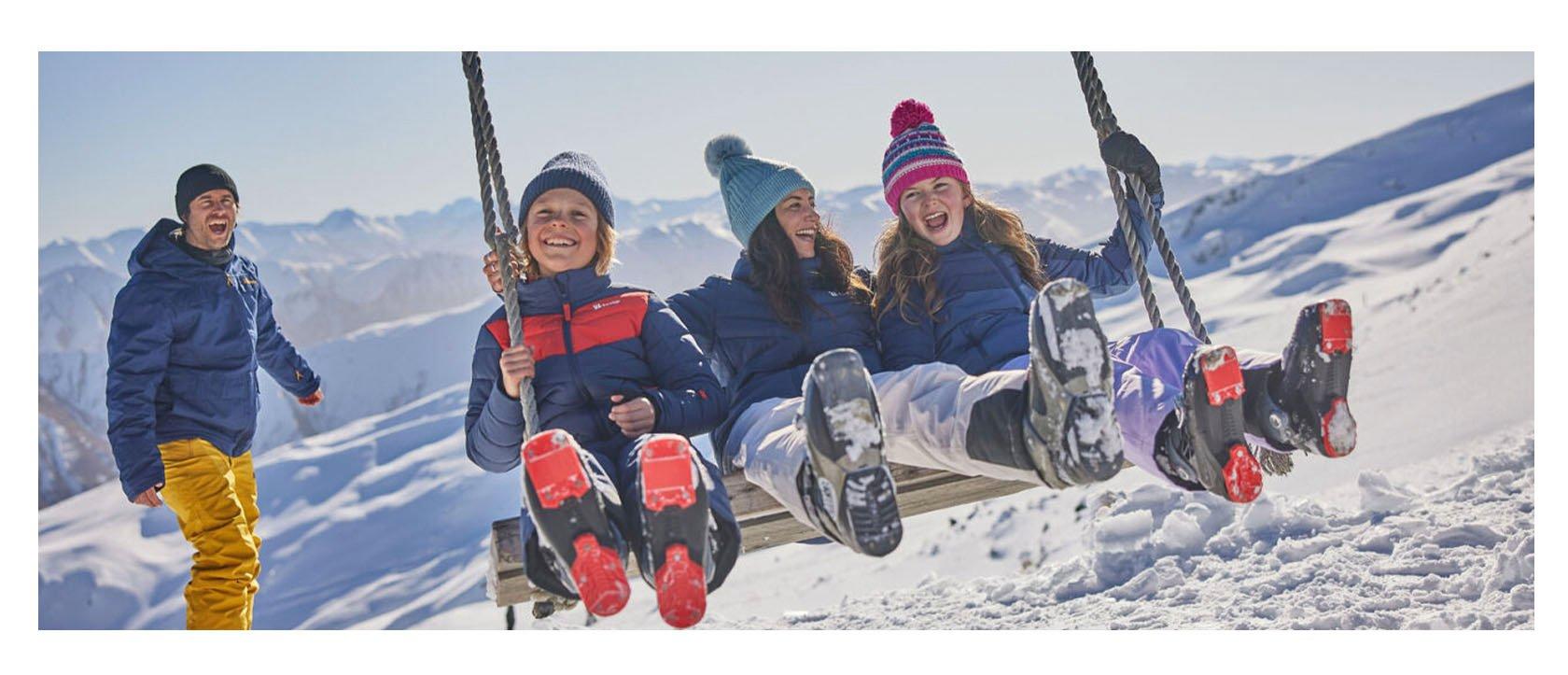

Ski boots can be evil torture devices that seem intent on ruining your ski trip - good ski socks are an inexpensive remedy. Pay attention to these three recommendations for a more comfortable trip:
Padding- A well-designed ski sock will provide additional padding at typical pressure points preventing troublesome bruising. The shin and top of the foot are the usual locations for padding.
Material – They should be made from sweat-wicking fibres, such as polyester and merino, that move sweat away from your skin, reducing the risk of blisters.
Multiple pairs - Account for two days in each pair of socks, beyond that you might upset your cohabitants with the aroma.
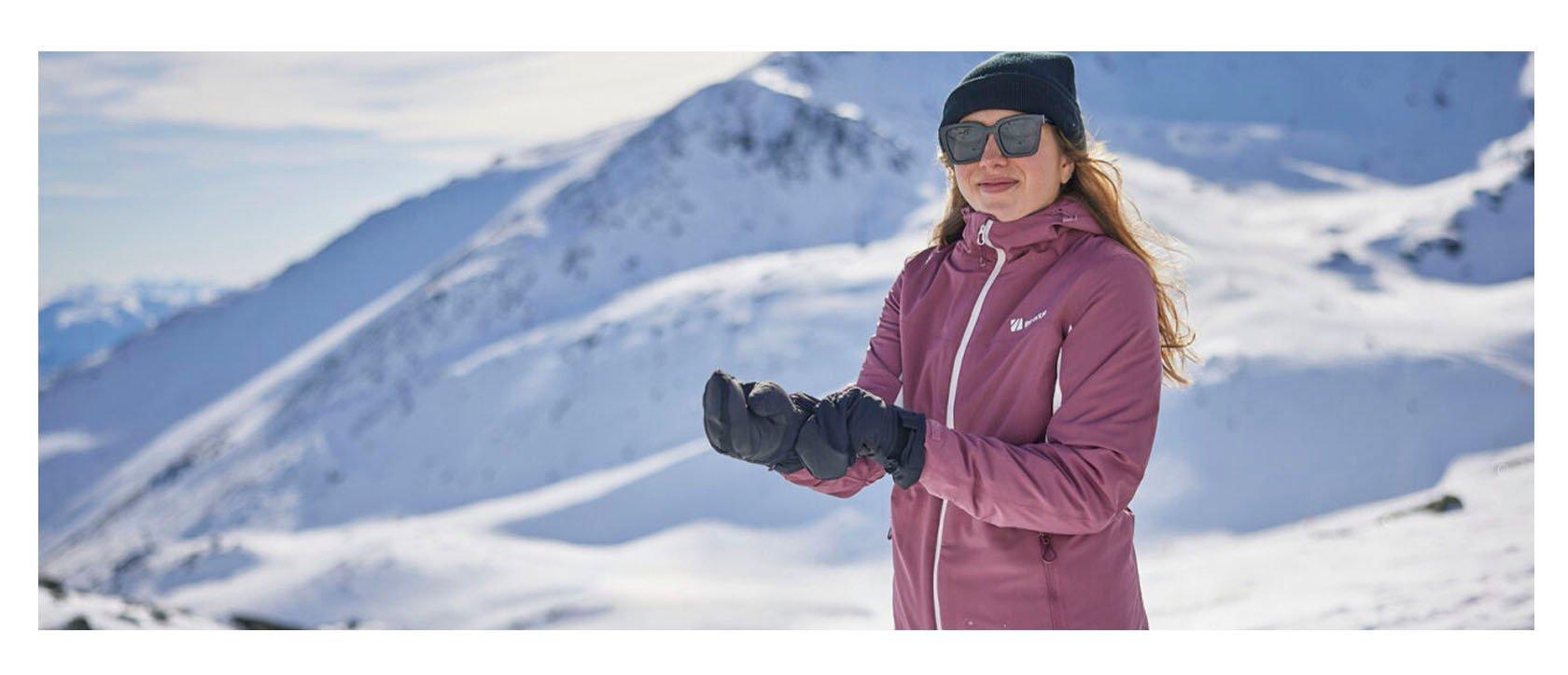

Often, the first part of the body to get cold is the hands. Beginner snowboarders who regularly need to push themselves up from the ground are particularly susceptible to cold and wet hands. We recommend investing in good quality gloves or mitts that are up to the job. Look for the following features:
Waterproofing- First, make sure the gloves are waterproof, keep an eye-out for branded liner/membrane technologies such as GORE-TEX for peace of mind.
Warmth- If your hands are sensitive to the cold a mitt will provide increased warmth at the cost of a little dexterity. For most ski days, gloves with synthetic insulation will be sufficiently warm, but baffled, down-filled mitts are worth hunting down for ultra-cold climates. A liner glove can be added to mitts and most gloves for extra warmth too.
Tough palms - A grippy, hardwearing palm made from leather or a rubber-like material like TPU will protect the glove against sharp ski edges and provide plenty of grip when holding ski poles.
Under or over cuff - Lastly, decide if you want the glove cuff to fit inside your jacket sleeve or over the top like a gauntlet. Gauntlet style gloves are particularly suited children because they are less fiddly.


Ski goggles can range from cheap and nasty to exorbitantly expensive – we'll help you to find the sweet spot between the two.
Goggles serve two purposes, to protect your eyes from UV light and to improve visibility of the terrain in front of you. A good goggle should fit comfortably, improve vision in a variety of weather conditions, keep fogging to a minimum and, perhaps most importantly, look good with your outfit! These are the features you need to keep an eye on:
Fit & Comfort– The current fashion is for oversize goggles. An oversize frame provides better peripheral vision and better google-helmet fit. Bear in mind that brands offer specific models for smaller faces. A quality goggle with a flexible frame and multilayer face foam should adapt to most face shapes.
Helmet compatibility- The best way to ensure this is to try the goggle-helmet combo in a store or to buy both the helmet and the goggle from the same brand. A good fitting goggle should fit the face without any noticeable gaps or pressure points. No part of the goggle's frame should rest on the helmet; it should sit flush with the edges of the helmet. An anti-slip finish on the inside of the goggle strap will prevent irritating movement and persistent adjustment. Avoid a gap between the google frame and helmet on the forehead.
Goggle lenses- Seeing the undulations of the trail in front of you is all about lens tint. In low-light situations choose a clear lens with a yellow or pink tint. Some tints are better than others; optics brands zealously guard their specially formulated tints. In bright, bluebird conditions, when huge amounts of light is reflected off the snow, a dark tint or a lens with a reflective finish is your best bet.
Changing goggle lenses - Mountain weather is changeable, so adaptability is key. The lazy option is a middle of the road lens tint with a VLT (Visible Light Transmission) rating of approximately 30%. This is fine for most conditions, but sub-optimal when the light is very bright or poor. Alternatively, a photochromic lens' tint changes depending on the intensity of ambient light. Another convenient option is carrying multiple lenses. Quick-change lens systems, using magnets or other mechanisms, make the switch fast and faff-free.
Don't worry about whether the lens is flat or spherical, this is more about aesthetics than performance. Choose the style you like.
UV Protection– Any goggle lens used for skiing should be UV400 protective. This is the highest standard of UV protection and prevents 99% of UVA and UVB rays from reaching and damaging your eyes.
Anti-fog design– A goggle with a dual lens (like double glazing) and sufficient ventilation is less likely to mist up during skiing.
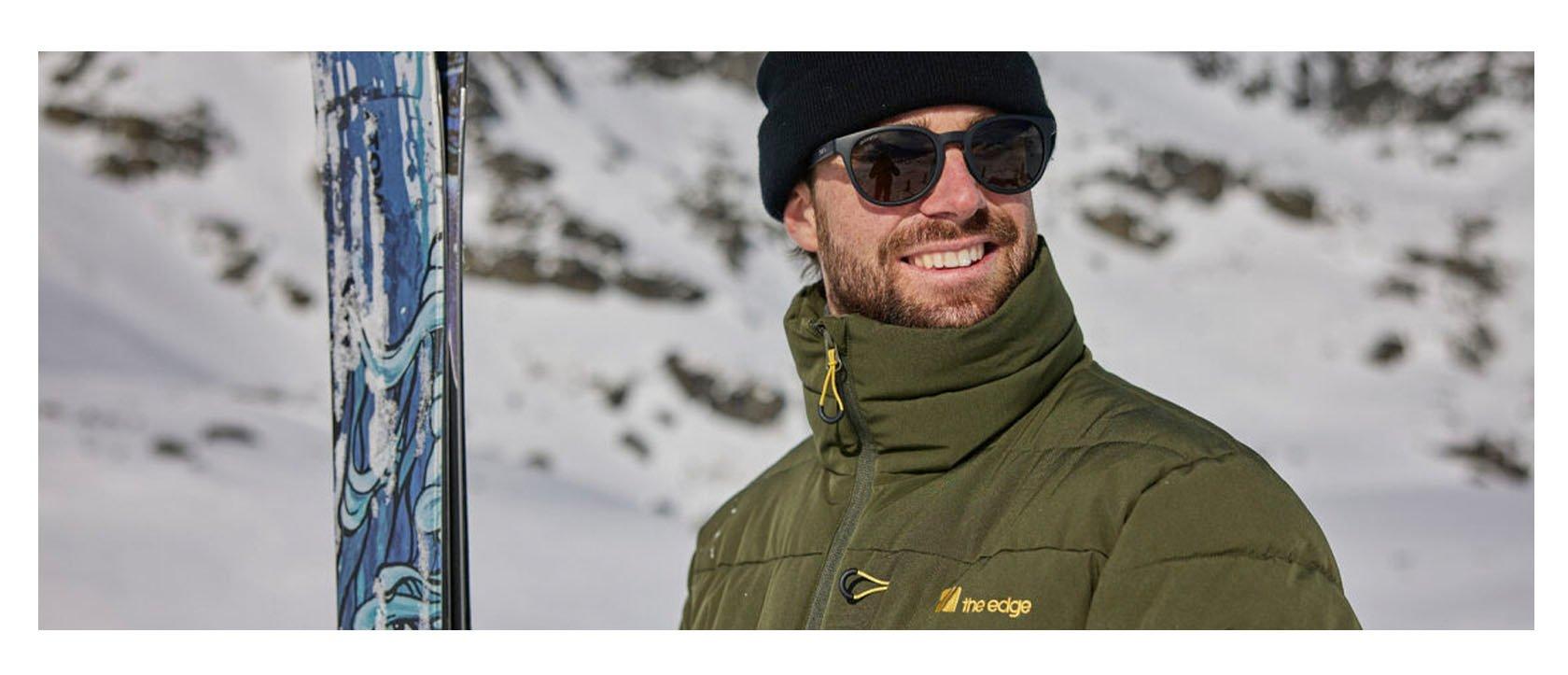

In recent years, the quality of offering from more affordable brands like Sinner and The Edge, has improved hugely. Unless you are set on the top brands, opting for a reputable, more value-orientated eyewear brand is a great way to save big bucks.
We always recommend a goggle for cold weather and stormy conditions, however sometimes it's nice to ditch the goggles and unleash the shades. Sunglasses can be worn in place of goggles, but ensure they are securely fastened with a neck cord and the frame and lenses either wrap around the face or that the glasses have side shields which prevent glare damaging eyesight. If you choose to wear your Ray-Bans anyway, you cannot say we didn't warn you!
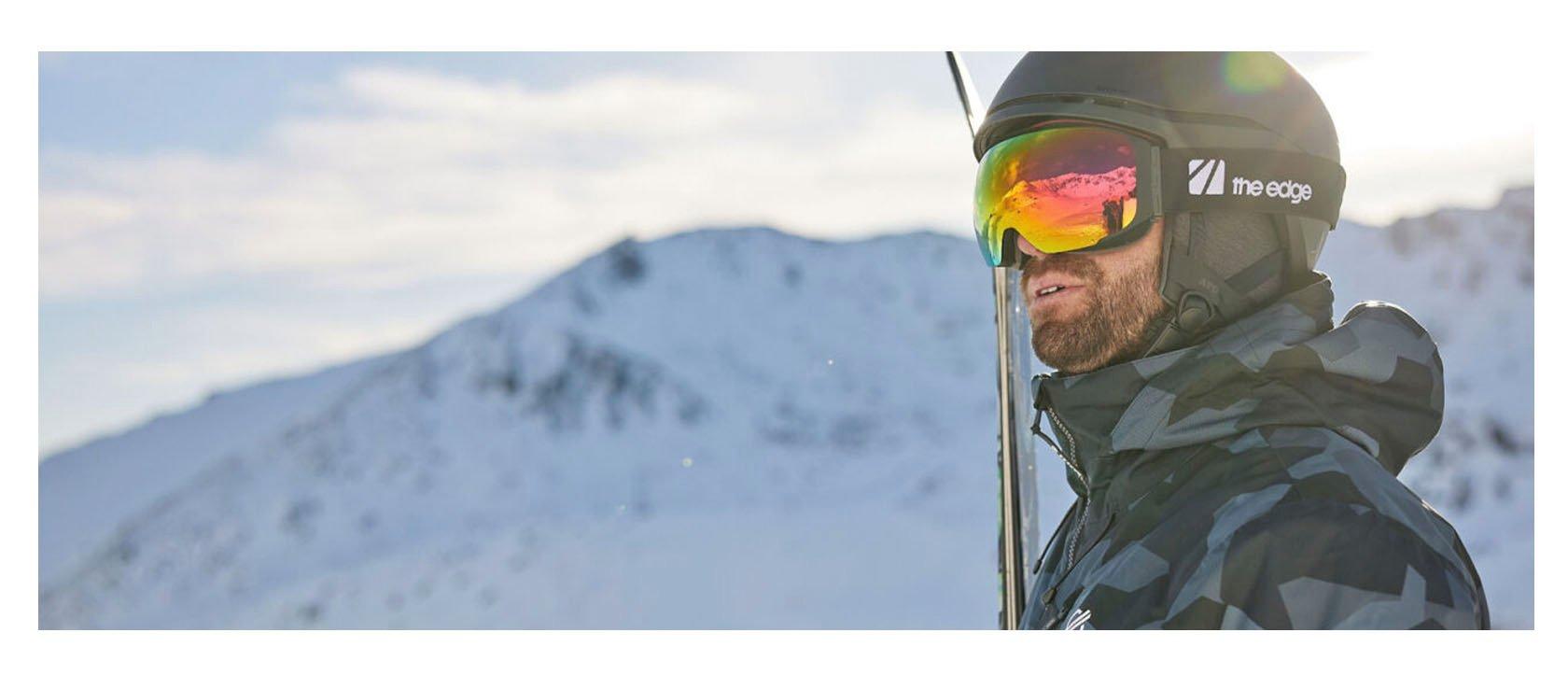

Over the last twenty years, ski helmets have become better fitting, lighter and more protective. The majority of skiers now choose to wear a helmet on the slopes. There's so much choice, even the most unique head shapes will find a helmet that fits. Here's what to look out for:
Impact Protection – A helmet's only job is to absorb energy from a fall. EPS (expanded polystyrene) or other technologies such as Choroid and Wavecell, compress when impacted to absorb shock. A helmet marketed and sold for snow sports use must meet European EN 1077 certification.
Shear Protection– MIPS is a low friction insert that moves within the helmet and reduces shear forces on the brain during an impact. The technology is proven to significantly reduce the risk of concussion and brain injury and is included in many premium models.
Fit & Comfort– A poorly fitting helmet does not offer the same level of protection as a good fitting one. Measure the circumference of your skull and select a size where the measurement sits as close to the middle of the range as possible. A fit system, such as BOA, will help to secure the helmet comfortably, but all the adjustability in the world will not secure the helmet sufficiently well if it is much too big or small.
Ventilation- Good airflow is an important helmet feature that's often overlooked. We advise ventilation which can be opened-up on warm spring days to let more cooling air in and closed on colder days to retain warmth.
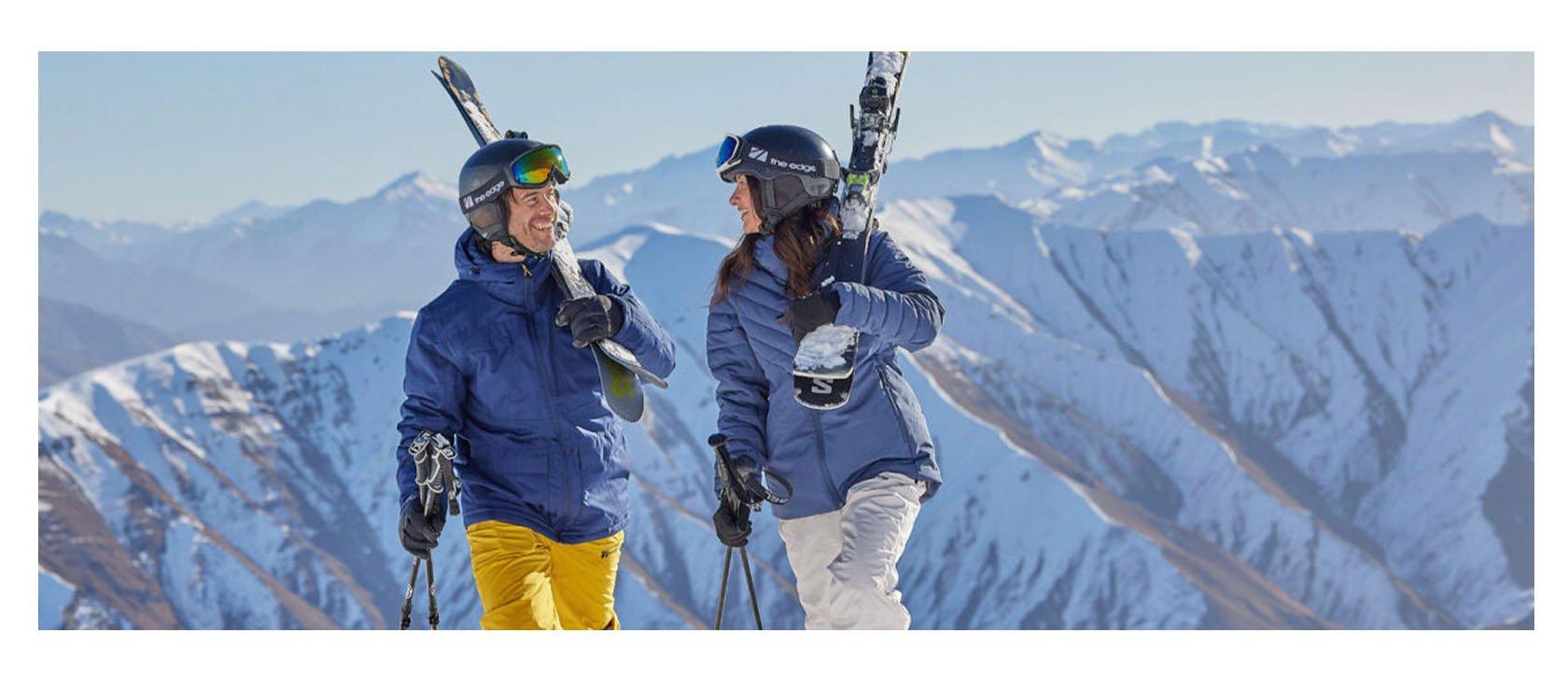

Ski jackets and pants (also known as salopettes) are collectively known as outerwear and are the key pieces of a ski outfit. Like any apparel designed for outdoor activities, they are designed to keep the elements out while letting perspiration evaporate too. Most ski clothing will also have additional features designed specifically for skiing, such as gaiters to keep snow out, to make your time in the mountains more comfortable and less stressful. Downhill skiing is a mix of energetic descents and cold lift queues and chairlift rides, so most outwear is insulated, or designed to permit layering, and has vents for dumping body heat.
Waterproof– Skiing isn't just sub-zero, blue-sky days. You may have to contend with rain and slush, which will saturate clothing in no time. Wet clothing is heavy and uncomfortable and can very quickly cause hypothermia. A hydrostatic head value (a rating which indicates the waterproofness of a fabric) of 2,000mm is considered waterproof. We recommend a value around 10,000mm for most conditions and higher values for regions with high humidity, such as British Columbia. A DWR coating will help fabrics to shed water without soaking up water.
Taped seams– When investing in more waterproof outerwear make sure the seams are taped to prevent water finding its way into your clothing.
Insulation– Long, mid-winter chairlift rides can be extremely cold. Technical layering is the best way to control body temperature effectively because insulating layers can be added or removed. If you don't fancy carrying a backpack containing layers while you ski, or the idea of being organised with layers sounds stressful, then insulated outerwear is the way to go. We recommend outerwear with in-built insulation for less experienced or less dynamic skiers who aren't working up a sweat during a ski day. Body-mapped insulation, which targets sensitive areas of the torso with thicker insulation, is a clever way to reduce weight and bulk without losing warmth where it's needed.
Breathability and ventilation– Perspiration that cannot evaporate through a porous/breathable will condense into water and saturate insulating layers, reducing their effectiveness. A breathable waterproof membrane allows perspiration to evaporate and underarm or inner-thigh venting dumps body heat and moisture quickly without removing the garment.
Allow room for layering – A flattering, skintight jumpsuit suit worn by the fashionistas of Courchevel and St. Moritz might look great but isn't practical for skiing in different conditions. We recommend a fit that allows multiple layers to be worn beneath. Ensure there is enough leg and arm length so that movement doesn't cause the cuffs to ride up: Anatomical tailoring in the knee and elbow is also effective at prevent it. Jacket length is also a consideration, it should sufficiently overlap with the top of the pants. And finally, a dungaree style "bib pant" is a comfortable and more protective alternative to traditional waist height salopettes.
Adjustability– Velcro cuffs and toggled hem and hood cinches will all prove their worth in a blizzard. A "helmet compatible hood" should be on the checklist of skiers that wear a helmet.
Snow Gaiters– Boot and wrist gaiters prevent snow from sneaking into outwear through pant and sleeve cuffs. A snow skirt is a gaiter attached to the jacket that fastens around the waist, preventing snow from going up your back or down your trousers. Gaiters are worth their weight in gold when there's fresh powder on the marked trails.
Pockets for everything – Good ski clothing will be loaded with pockets of all shapes and sizes, with dedicated pockets for your ski pass, mobile phone, spare goggle lenses and the kitchen sink. Fleece-lined handwarmer pockets are welcome respite from wet gloves. Make sure external pockets are zipped to secure their contents and keep snow out.
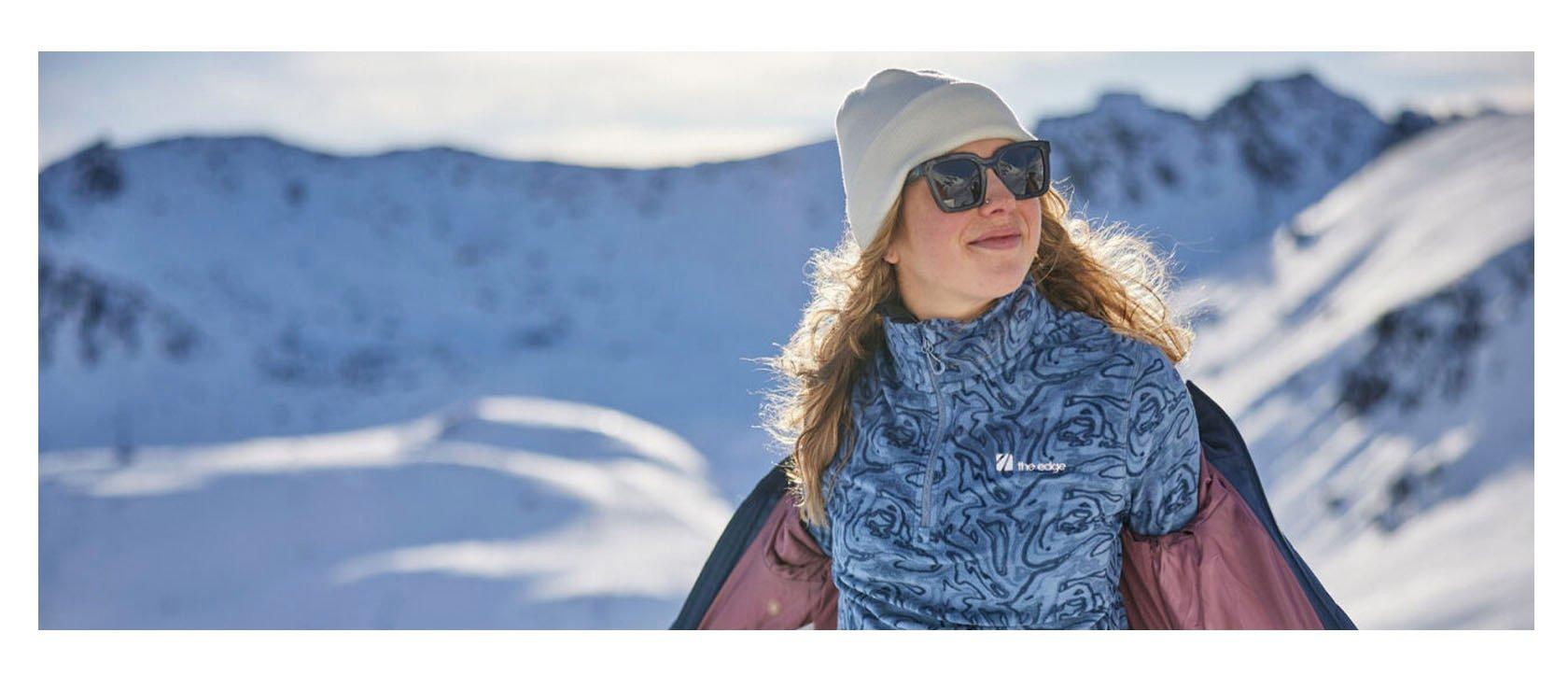

While it is outerwear's job to keep the weather out, it is the mid layers' job to keep body heat in. Insulation traps air that has been warmed by the body, preventing heat loss by convection and conduction. Using the principles of layering to control body temperature are key to choosing the right mid layers for a ski trip. It all starts with the humble mid-weight fleece:
Technical Fabric- Cotton fibres retain perspiration instead of transporting it away from the body, so they are unsuitable for sport. Softshell is another fabric to avoid as it is less permeable to water vapour than woven fabrics. A technical synthetic fabric with hollow fibres, such as polyester fleece, is perfect for mid layer duties. Wool, particularly merino and cashmere varieties, are awesome natural alternatives, but are expensive and more challenging to wash.
Insulators– When the mercury plummets a baffled insulator (puffa) is the simplest way to add a whole lot of insulation in a single layer. Unless it is extremely cold, a mid or lightweight down jacket, such as the popular Rab Microlight and Berghaus Bynack, provide a good compromise between warmth and bulk. A down-filled insulator offers a greater warmth to weight ratio than synthetic fill and takes up the least space in a daypack or luggage. A down gilet is a great way to add core warmth and limit restrictive bulk around the arms.
Hood or Collar– A hood can add extra warmth or just get in the way. A zip-up collar provides insulation around the neck but nothing around your head. This one is down to personal preference.
The Art of Layering– Add layers when it's cold, remove them when you're hot - it's so simple, but so effective. Pack a variety of mid layers with varying degrees of insulation and you'll be prepared whatever the weather.
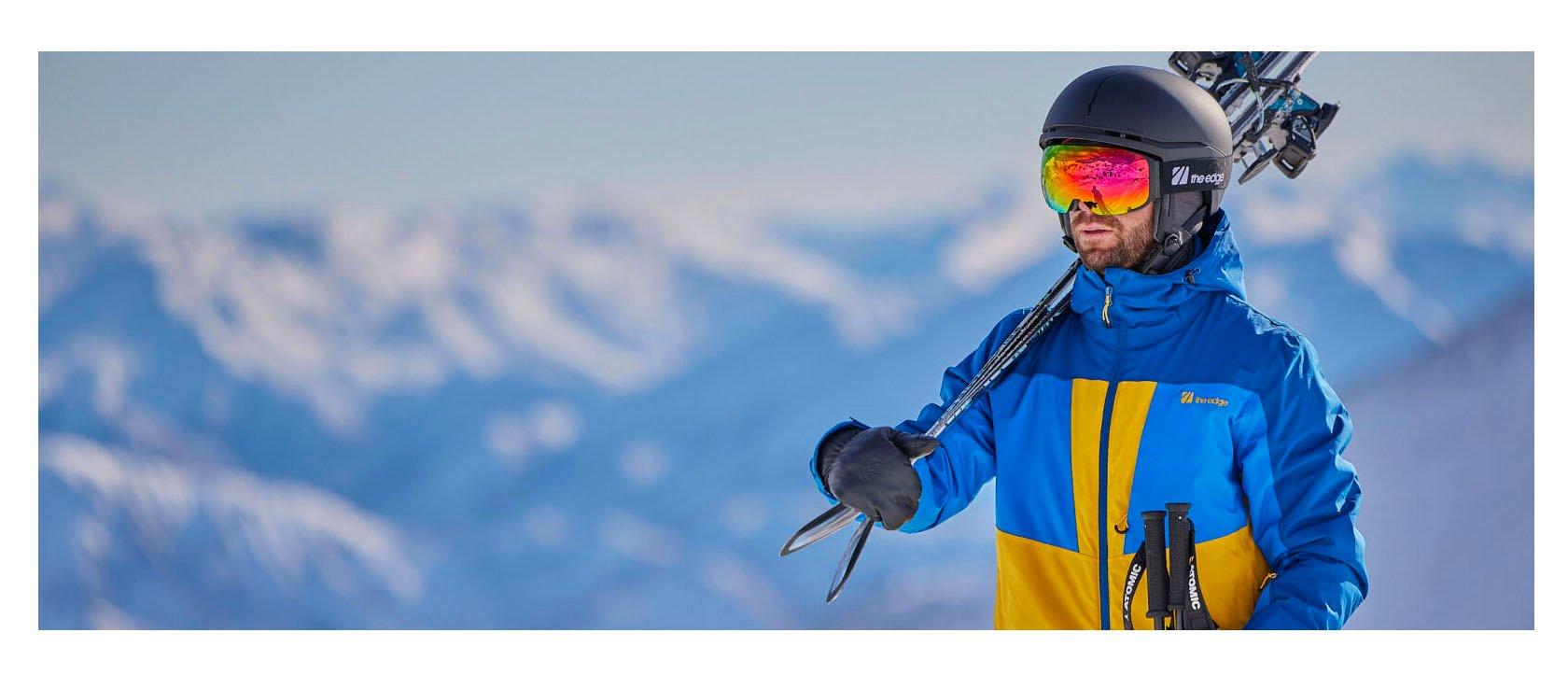

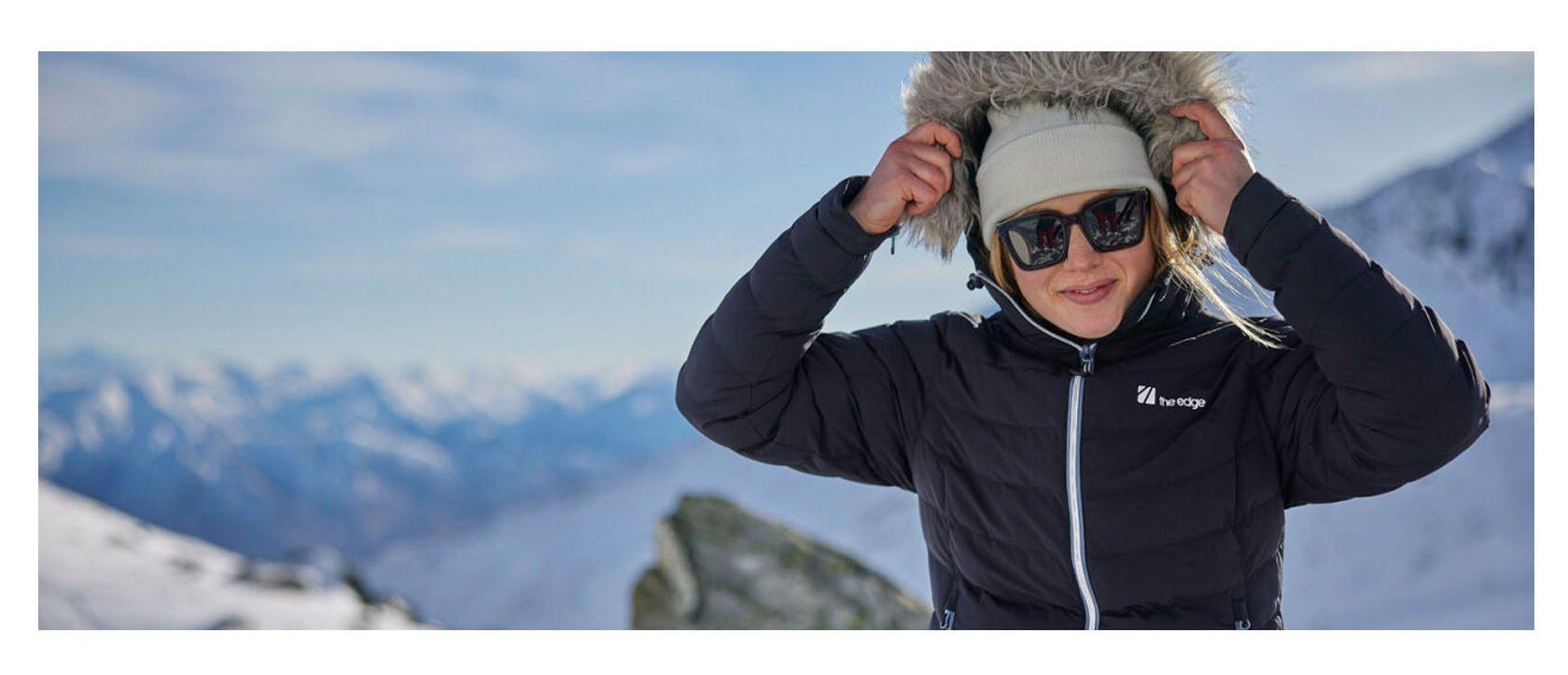

The essential foundation to your ski outfit is a good set of base layers. Although base layers trap body heat, this is not their primary function. The base layer's function is to move sweat away from the skin, keeping you dry and comfortable. Keep the following in-mind when selecting base layers.
Comfort- This is the only layer that sits against the skin, so it needs to be comfortable. Bamboo, polyester, and fine merino wool all feel great against the skin.
Skintight Fit– It is generally agreed that base layers that hug the skin are better at wicking sweat than loose garments. A tailored fit that is neither loose nor spray-on will do the job fine too.
Sweat Wicking– The capillary action of a technical fabric's yarn moves moisture away from the skin, keeping you dry. The most effective fabrics for wicking sweat are polyester, which is used to make sportswear fabrics, such as COOLMAX, and merino wool.
Compression Base Layers– Compression base layers are woven in a way that applies light pressure to certain muscles during exercise, reducing the build-up of lactic acid.
Thermals– Thermals are base layers made from thicker technical fabrics, which provide extra insulation.


A neck chute, or neck warmer, is welcome relief to biting winds and blazing sunshine. They are inexpensive, scrunch-up to fit into any pocket, and won't get in the way of helmet straps. You can also opt for a cosy hat to wear on the slopes for après ski!

